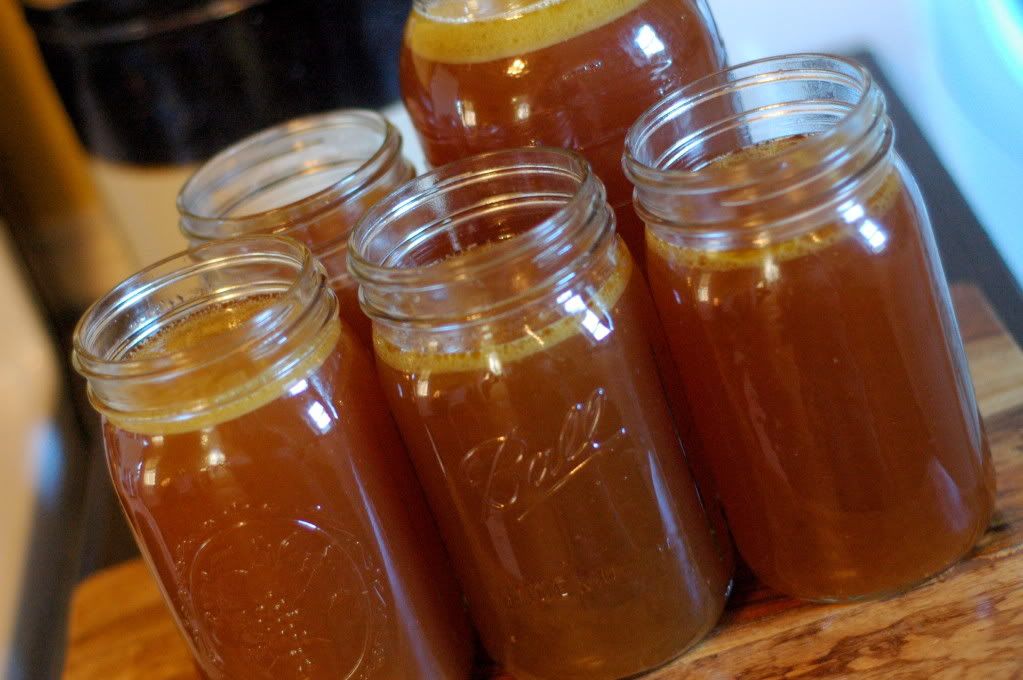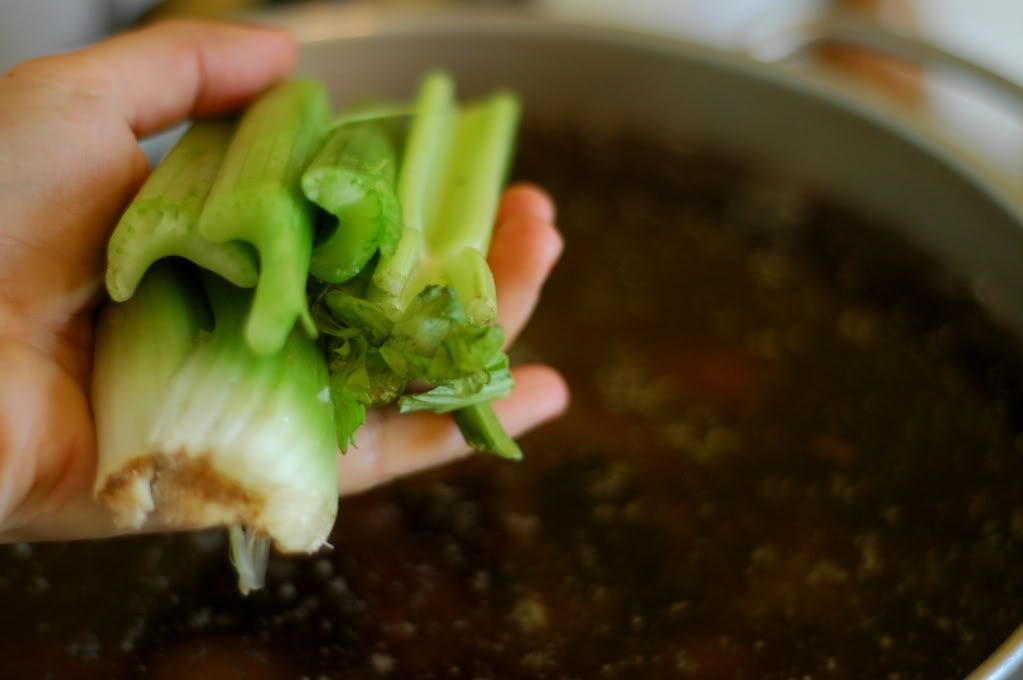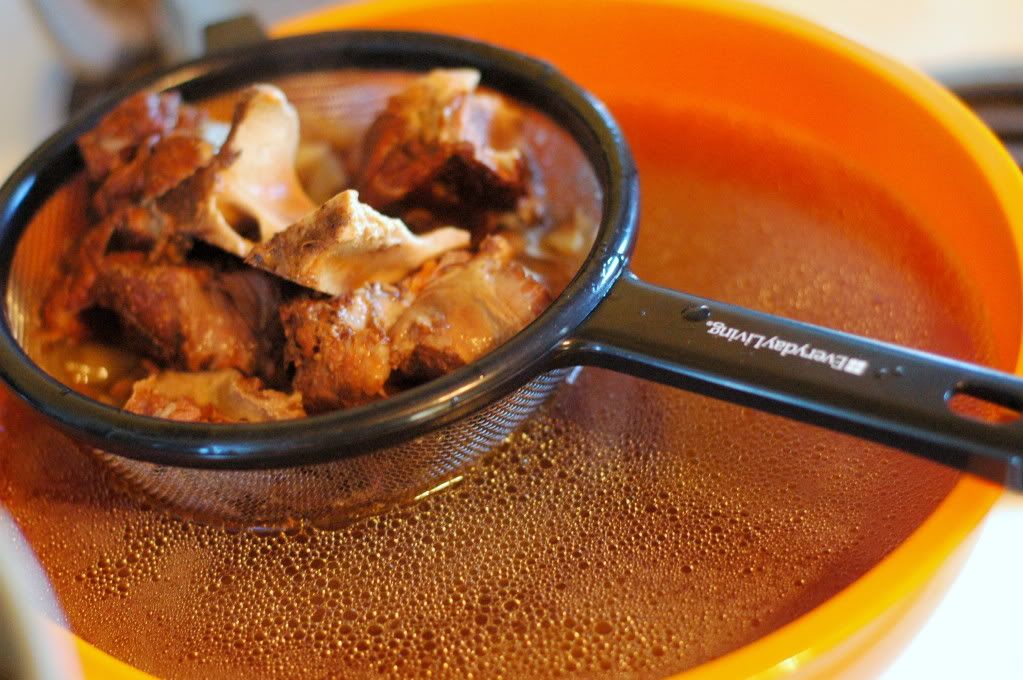I don't know if you knew this about me or not, but...
....
...I love food.
I confess, it's the key to my heart.
And while "key to my heart" sounds romantic, I assure you, this post is anything but romantic. I'm just trying to make it sound pretty, because in reality, this post involves gristle and bones and blood and marrow and fat.
We just totally lost that romantic-food-vibe we had going, didn't we? Dang it.
Oh well. This is a homestead after all. And homesteads involve gristle and bones and blood and marrow and fat. And that's that.
So let's jump to it, shall we?
It's winter time, in case you didn't know. And winter time is a time to feed our souls warmth and goodness that will help to keep us free from colds & bugs. Insert: homemade beef broth. Nothing nourishes our bodies quite like easily absorbed broth, rich in delicious goodness. This broth is my first line of defense against colds this winter, so I'm making a BUNCH of it, baby.
Last year, when we purchased our locally-raised steer for beef, I had them include "soup bones". These bones, which you could also get from a local butcher, impart a rich flavor and gelatin to the broth, that is truly impossible to find on your grocery store shelf. So go get you some. Or, save and freeze bones from homemade roasts throughout the year until it's time for stock making! Let's do this.
Beef Stock
You will need:
- About 4 pounds of beef bones (really, any assortment of meat & bone pieces work!)
- 1/2 cup vinegar
- 2 onions, halved
- 2 carrots, broken into pieces
- 3 celery stocks, broken into pieces
- A pinch of peppercorns (optional)
- A few springs of fresh thyme (optional)
- Water
Step One: If any of the bones have meat on them, place them on a cookie sheet and roast in a 350 degree oven until they are nice and brown. Remove from the oven.
Step Two: Fill a large stockpot with cold water. Add the browned bones, the onions, carrots, celery, vinegar, thyme, and peppercorns. Allow the pot to sit at room temperature for an hour.
Step Three: Bring the pot to a boil, cover, then reduce heat and simmer for 12-72 hours. I do mine for 24 hours. After sufficient simmering, turn the burner off and allow the mixture to reach room temperature. Then, using a strainer, drain the broth from the bones & vegetables (I strain mine in mason jars, which are easily stored in the fridge or freezer). After the stock has cooled, skim the solidified fat from the top of the jar, and discard.
Note: If freezing in mason jars, allow them to cool down in the refrigerator first, which will prevent breaking. Also, don't fill the jars too full so the stock has room to expand.
Oh yum. The potential of this broth is limitless! Stews. Gumbos. Marinades. Sauces. Risotto. It's like the backbone of all that is to be in the kitchen.
After I canned the broth, you know what I did?
I put the bones back into the pot, added more cold water and vinegar, and started simmering another batch! I've heard you can use the same bones four times. Though each resulting batch is less dense, it's still full of flavor and goodness. Talk about milkin' 'em for all their worth.
Oh. And in case you forgot...
...this is my adorable, squeezable, kissable baby.
And that's all.






*mouthwatering* I want your broth...
ReplyDeleteThanks for linking your great post to FAT TUESDAY. This looks great!! Hope to see you next week!
ReplyDeleteBe sure to visit RealFoodForager.com on Sunday for Sunday Snippets – your post from Fat Tuesday may be featured there!
http://realfoodforager.com/2011/12/fat-tuesday-december-6-2011/
Hello, I am awarding you the Liebster Blog Award as I absolutely love your foodie life blog. Please see my blog for details.
ReplyDelete- Abby Jo @ Forgotten Way Blog
Hey there! So I am really liking this recipe and was wondering, since you know lots about cows, about the sodium in this. I am not looking for exact numbers, but do you think it is relatively low in sodium? Is beef normally low in salt? No clue here and my boy has to stick to a low salt diet since his kidneys have gone all crazy. I would love to can some homemade beef broth instead of buying it from the store! - Jessica
ReplyDeleteYour beef stock looks so lovely and rich! This is a great stock-making post. I'm hosting a weekly blog carnival specifically for soups, stocks and chowders, every Sunday! I would love it if you would come over and post this recipe. Here's a link with more information:
ReplyDeletehttp://easynaturalfood.com/2011/10/17/introducing-sunday-night-soup-night/
I hope to see you there!
Debbie
what is sweet post and delicious look . cute baby and nice clicking
ReplyDeleteWhat a good reminder to roast the bones first. Thanks for sharing you broth recipe. Looks great!
ReplyDeleteThis is pretty much how I do it except I use a crock pot. A big one!
ReplyDeleteTo Jessica above who mentioned salt and her son's kidney condition: I wouldn't worry about the sodium content. Sodium is quite necessary, even for malfunctioning kidneys, but be sure to use genuine sea salt, not the crappy Morton stuff from the grocery store. I use this grey sea salt: http://www.farawayfoods.com/greyseasalt.html
I also like this one: http://www.farawayfoods.com/fleurdesel.html
Sodium is considered a "trace" mineral so is needed only in small amounts. Doctors are more and more changing the way they view the role of sodium in the functioning body, as well as the malfunctioning body.
It's not a celery "stock" it's a celery stalk. They are called stalks of celery. =8-o
ReplyDeleteDISCARD THE FAT??!!??!!
ReplyDeleteI always save my fat from making broth. I use it as the fat to brown roasts, chops, etc. OR use it to deep-fry French fries. As an occasional treat, its great! McDonalds used to do that way back when...